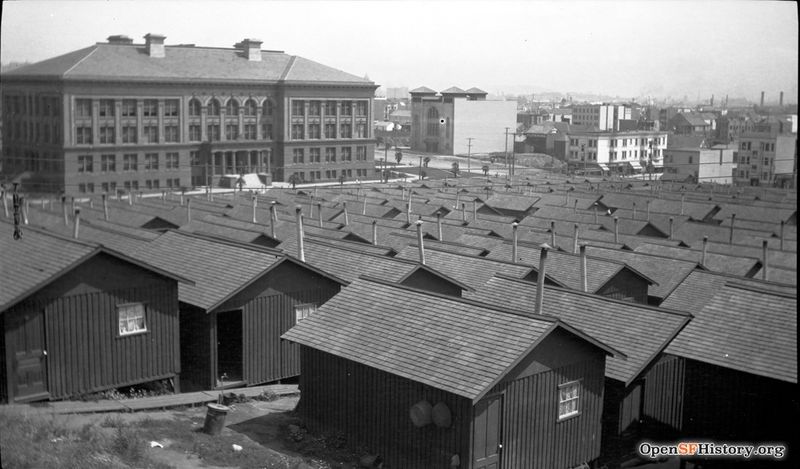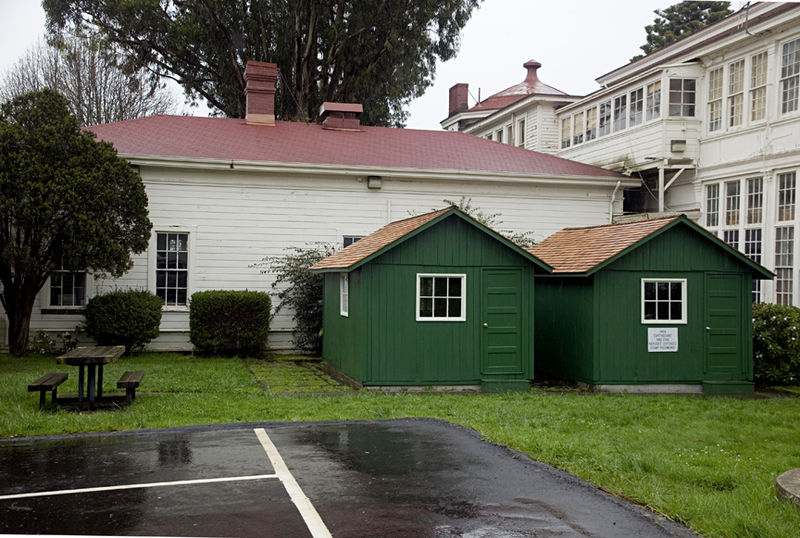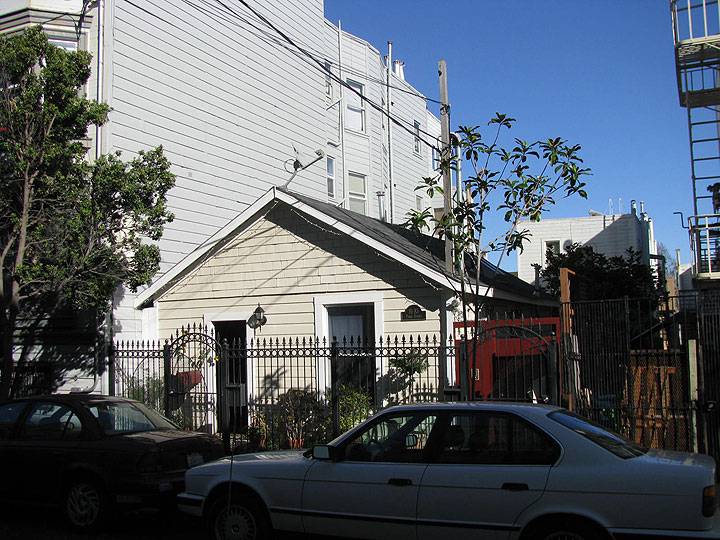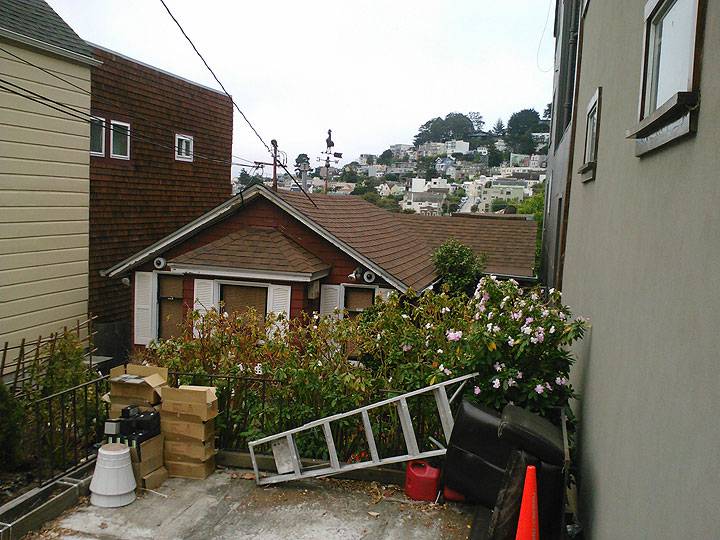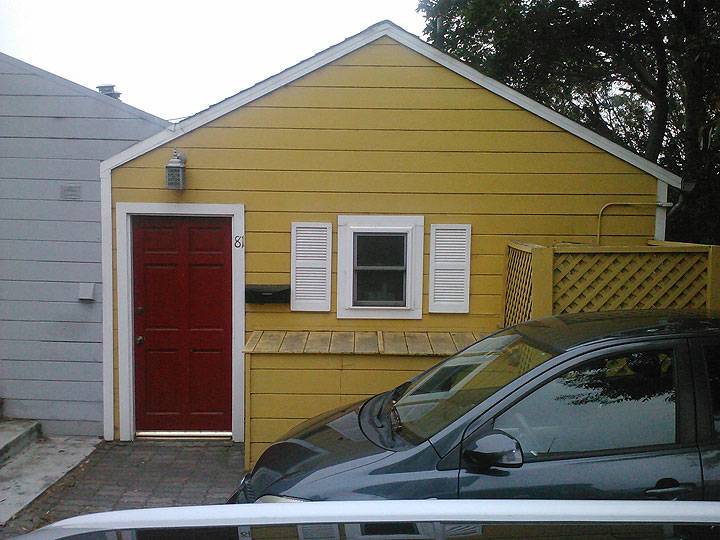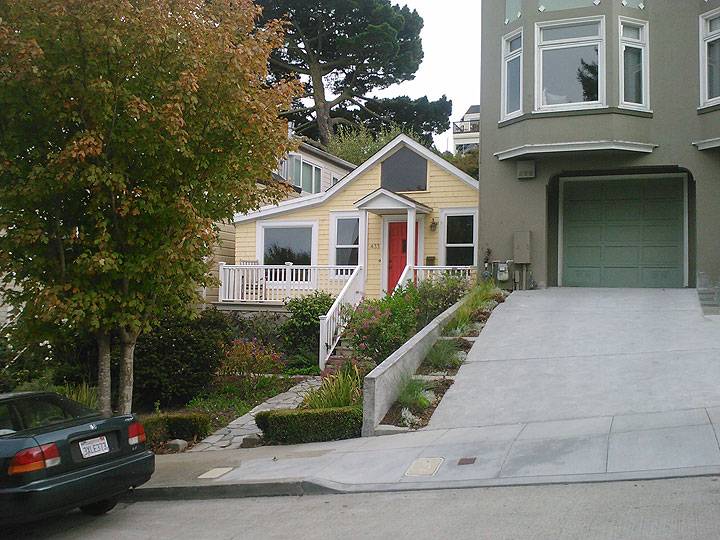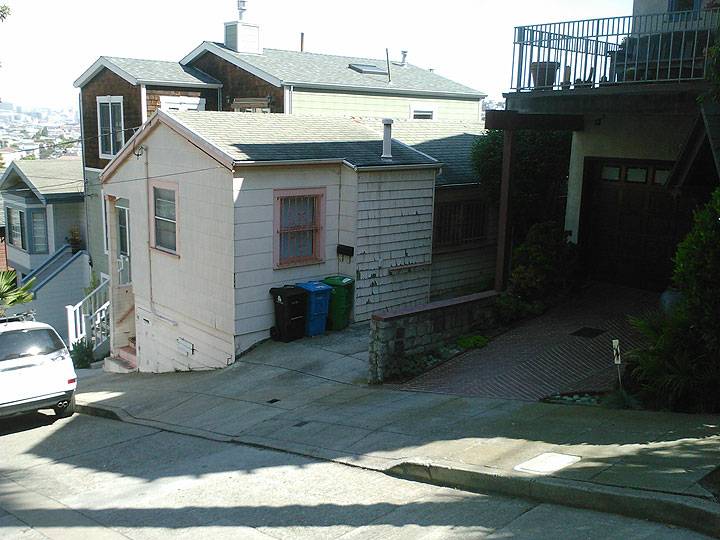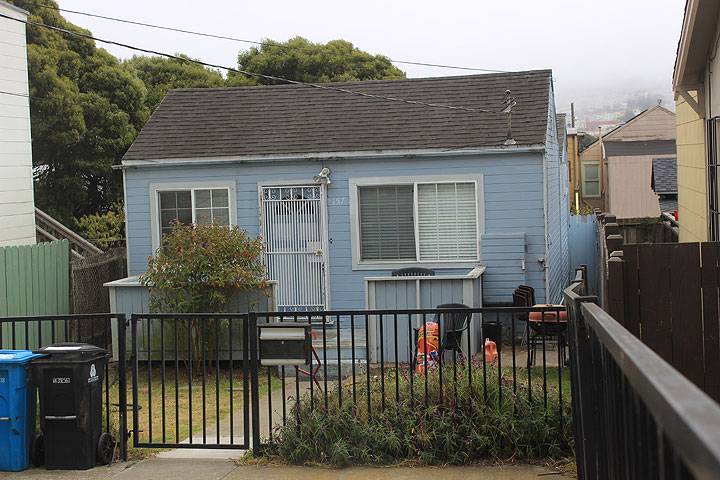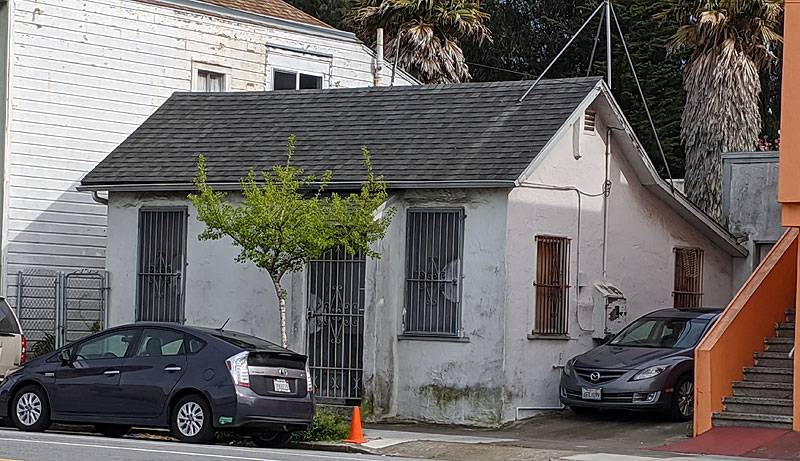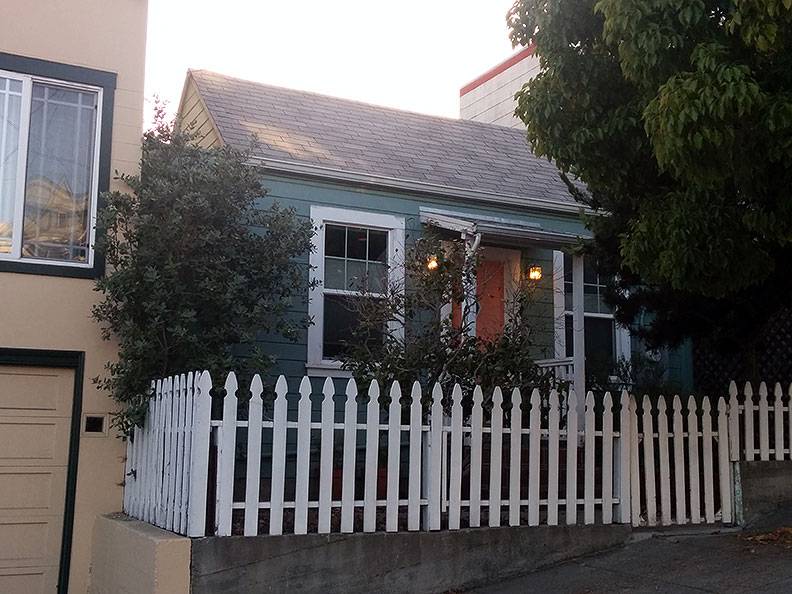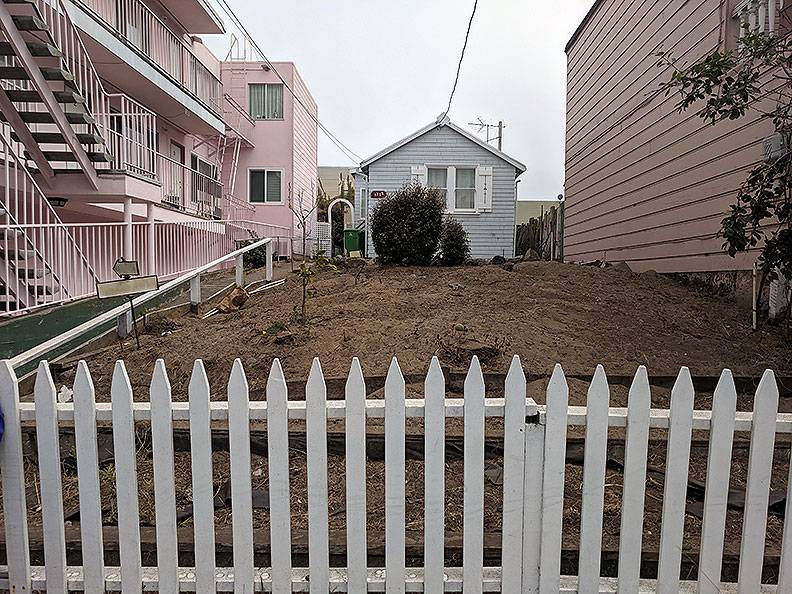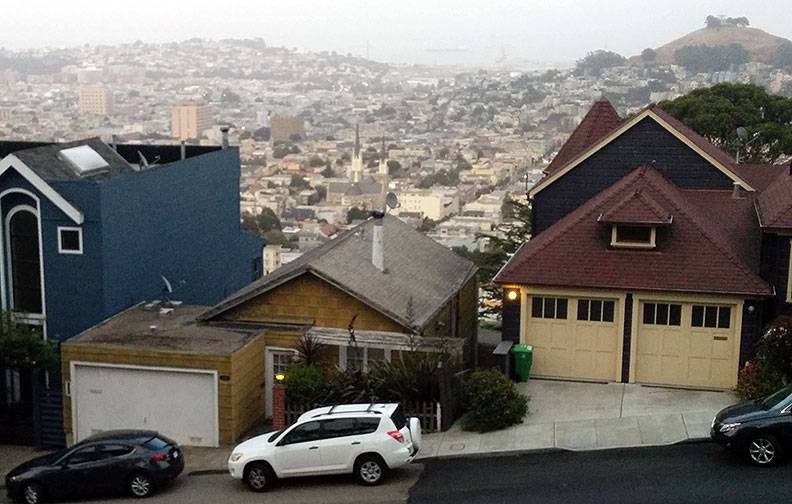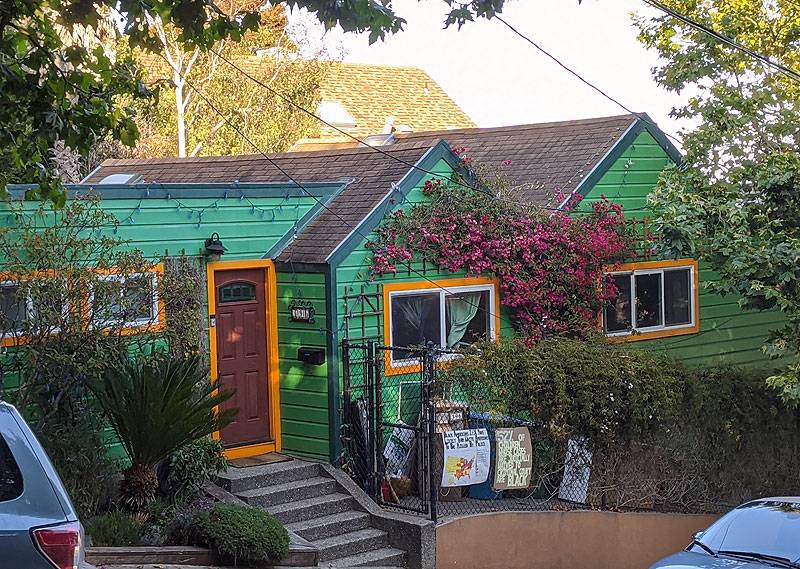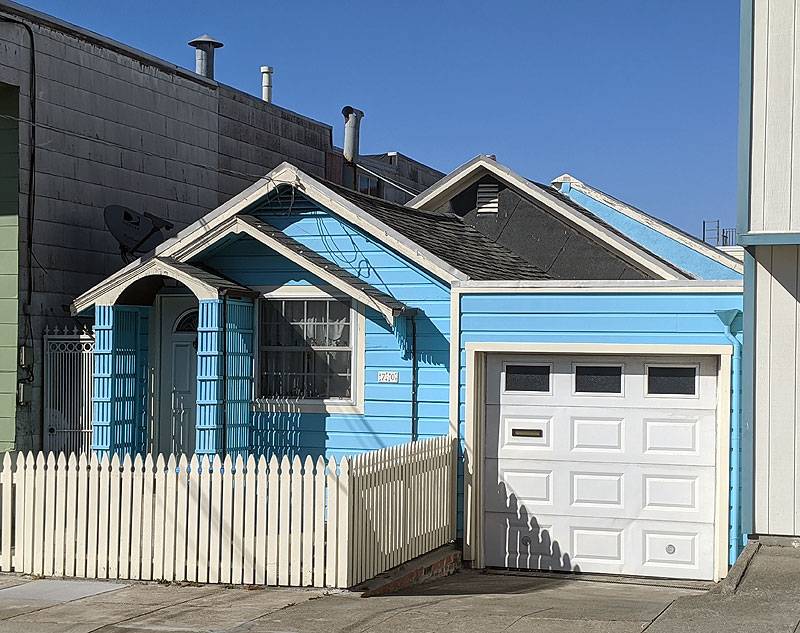1906 Earthquake Shack Survivors
Unfinished History
Dolores Park—then Mission Park—cottage camp, opened November 19, 1906 and closed October 22, 1907.
Photo: OpenSFHistory.org wnp14.0615
These two quake cottages, in their original green color, were preserved and on display for a while on the Presidio.
Photo: Chris Carlsson
Earthquake cottages, the FEMA trailers of their day, were originally built and distributed in the wake of the 1906 earthquake and fire. John Baranski describes how they came to be in his Housing the City by the Bay: Tenant Activism, Civil Rights, and Class Politics in San Francisco (Stanford University Press: 2019):
[After the 1906 quake], Dr. Edward T. Devine, a New Yorker sent to San Francisco by the American Red Cross and member of the Finance Committee… called for the establishment of a nonprofit public corporation with the power to build, sell, and rent permanent housing. The housing would be not just for the usual long-term dependents of city government—such as the aged, infirm, and invalid—but also for workers who did not earn enough money to rent or buy their own homes. He recommended using $3 to $4 million of the committee’s money for housing. His program was designed to put money into circulation, create jobs, and make housing for residents who might otherwise leave for want of shelter. Inherent in Devine’s program was the conviction that public agencies should provide model homes and communities. In the end, Devine’s plan for permanent projects was reduced to 5,610 temporary cottages and 19 two-story tenements for sale to the private sector. Demand for the cottages was “enormous,” according to the Red Cross, and many of the 17,000 residents housed in these buildings across the city regarded them as better than the pre-quake housing. By the summer of 1907, the tenants were given a choice: Either purchase and move the dwellings to individual lots or be forcibly removed by city park authorities. As thousands of families were forced back into the private housing market, the city’s first experiment with nonspeculative, social housing came to an end.
Dozens of quake shack survivors dot the hills and are spread across most of San Francisco's neighborhoods. Sometimes they are plain to see, other times they are embedded in more extensive, modernized structures. It's fun to hunt for them. These photos are some that are definitely—or most likely—former earthquake shacks that were moved out of the parks to various available lots after 1907.
Surviving quake shack on Pearl Street between Duboce and Market.
Photo: Chris Carlsson
369 Valley Street.
Photo: Chris Carlsson
81 Mayflower Street.
Photo: Chris Carlsson
433 Liberty Street: is this a quake shack that was built on and extended?
Photo: Chris Carlsson
Possible shack on 21st Street.
Photo: Chris Carlsson
157 Lobos Street, might be double-quake shacks.
Photo: Chris Carlsson
Looks like an old quake shack hoisted up to the 2nd floor of this improvised structure, and windows put in all around... on the 500 block of Circular Ave., near Marston.
Photo: Chris Carlsson
Likely quake shack on Paul Avenue in the Bayview.
Photo: Chris Carlsson
Might be a quake shack, on Bernal Heights.
Photo: Chris Carlsson, 2014
1728 Clement Street. Sure looks like one!
Photo: Chris Carlsson, 2019
Diamond Street just below Diamond Heights Blvd., a modernized structure that seems to be built on an old quake shack footprint.
Photo: Chris Carlsson, 2014
This building on Ringold Alley in South of Market is comprised of two earthquake shacks with a new facade.
Photo: Chris Carlsson, 2020.
This looks like a shack with a major buildout and extension, covering the corner of Laidley and Mateo in Glen Park.
Photo: Chris Carlsson, 2020.
Another apparent quake shack, with foyer, garage, and extension built around it on Farragut near Rae, overlooking Visitacion Valley and Little Hollywood.
Photo: Chris Carlsson, 2020.

